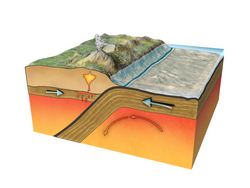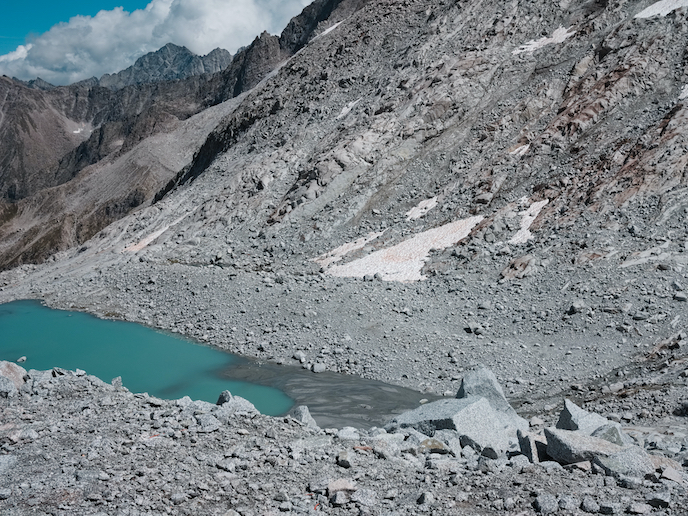Subduction of oceanic crust and the fate of volatiles
Despite being critical for life on Earth, volatiles such as H2O, carbon dioxide, carbon and methane are often overlooked. Volatiles are a group of chemical elements and compounds with low boiling points that are associated with the planet's crust and/or atmosphere and escape from the Earth's interior through volcanic eruptions. The chief means of replenishing the Earth's interior with volatiles is through subduction, whereby one tectonic plate moves under another and sinks into the Earth's mantle. As samples from the planet's deep interior are inaccessible, the FATEMANTLE (The fate and behaviour of volatiles during subduction of oceanic crustal material towards greater mantle depths) project was established to simulate deep Earth's mantle conditions and processes. High pressure and temperature experiments were conducted on NAMS. Scientists wished to determine the maximum storage capacity, solubility and behaviour of volatile components during the subduction of carbonated, hydrated oceanic material into the mantle's transition zone. The experimental approach enabled scientists to determine maximum H2O content of NAMs in volatile-bearing subducted oceanic crust. Samples with the composition of hydrated oceanic crust, but with variable H2O contents, were welded into metal capsules and compressed using a 1 000 tonne multi-anvil press to pressures that correspond to depths in the mantle of 100-200 km. This is the depth at which most dehydration reactions take place within subduction zones. Results showed that the concentrations of H2O stored in phengite mica, one of the few hydrous minerals stable at depths greater than 100 km, were relatively low. This implies that relatively little H2O is being subducted. Researchers also examined the homogenisation processes between subducted oceanic crust and mantle rocks. They found that the silicon dioxide partial melt reacts with olivine, the main mantle material, to form narrow zones of the new mineral orthopyroxene. FATEMANTLE also investigated how partial melting of eclogite and peridotite rocks affects the abundance of oxygen in the mantle. The results showed that ferric iron is an incompatible component in the mantle and partitions more preferentially into melts than minerals. The extraction of partial melt is, therefore, one way in which oxygen is removed from regions of the mantle. These results explain how eclogite rocks can become reduced and can, therefore, act as host rocks for the deep subduction of carbon as diamond.







